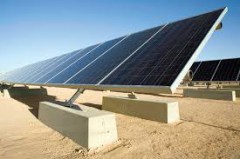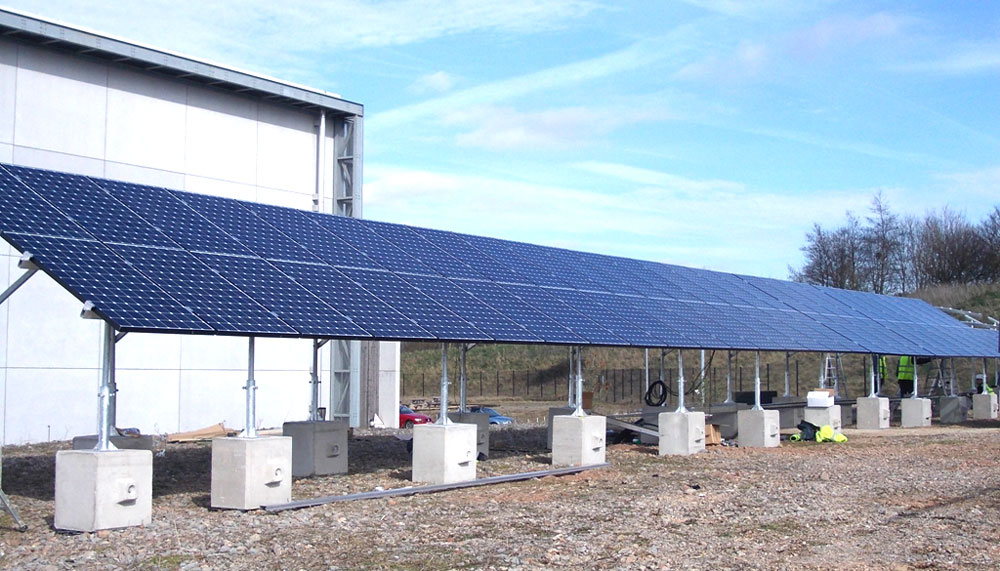Ground‐mounted solar power systems are being installed in commercial and residential applications throughout the UK in increasing numbers. Whether the solar power system utilizes Photovoltaic (PV) technologies such as fixed tilt, single axis, or dual axis trackers, or a Concentrated Solar Power (CSP) system, such as the parabolic trough, there is one thing that each of these systems has in common…they are only as good as their foundation.
The solar modules are the greatest asset in any solar power installation. While the cost of solar modules can vary greatly depending on their type, quality, and size, one thing is certain, they are not cheap. Solar modules alone can account for between 50‐60% of the total solar power system cost. This illustrates how important it is to make sure that the solar modules have a stable, secure support system and foundation regardless of the type of installation method.
When it comes to supporting solar modules there are several different methods that are being used in the solar industry including the following:
- Precast concrete ‘’feet’’ / ballast (counterweights) or kentledge
- Driven piles
- Screw type earth auger
- Concrete piers
KNOW THE ENVIRONMENT

Choosing the right solar module support method involves understanding a variety of environmental factors such as soil conditions, geographic location, and regional wind speeds to name a few. Other important factors that need to be considered include soil mechanics such as consolidation, permeability and seepage, bearing capacity, lateral earth pressure, slope stability, as well as wind engineering to determine potential forces or loads that the solar module installation will be subject to, based on panel size, panel weight, geographic orientation, etc. Each of these factors needs to be carefully considered for each and every solar system installation in order to minimize the risk of downtime caused by damage or failure to the system components and then in turn maximize the ROI or return on investment of the system.
When employing below ground solutions such as driven piles, screw augers, or concrete piers, it is essential to consider all of the environmental factors involved to reduce the risk of “hole widening” or “pole tilting” due to ground consolidation, “panel rotation” due to wind forces, soil saturation, lateral earth pressure, etc. which can directly affect the orientation and therefore the efficiency of the panels, and which can also cause damage to the electrical connections below ground requiring costly repair. When utilizing precast concrete ‘’feet’’ / ballast (counterweights) or kentledge it is imperative to understand wind loads, slope stability, soil permeability and seepage, etc, to know how wind loads can cause overturning or sliding.
While the driven pile method was the original preferred method for installing solar modules, the increasing use of landfill sites and contaminated / brownfield sites for solar farm projects the use of precast concrete ‘’feet’’ / ballast (counterweights) or kentledge is quickly gaining in popularity. Landfills and contaminated / brownfield sites are ideal candidates for solar farms because they are considered already disturbed lands and thereby relieve the pressure to develop on undisturbed or uncontaminated lands or greenbelt.. However, many of these sites do not permit or allow ground penetration for obvious reasons. Once you get past the three feet of soil / capping materials, you reach the contaminated soils / gases below. This is one area where precast concrete ballast / kentledge wins driven piles because they provide it is a non penetrating solution.
Other areas where precast concrete ballast / kentledge are finding success, is where solar installations are located over bedrock where penetration is difficult if not impossible, where solar installations are in areas with high water tables, and installations with adverse soil conditions such as corrosive soils or soils with poor passive earth‐pressure characteristics. In addition to not penetrating the ground, precast concrete footings offer a variety of other benefits such as:
- No soil Penetration.
- Minimal site excavation/preparation needed.
- Speed of delivery and installation
- Eliminates the need for readymix concrete and all associated issues including pouring, and curing time and the difficulties in getting readymix concrete to remote locations.
- Accommodates most site locations and conditions and is not weather dependant (i.e. you can’t pour concrete in adverse weather)
- Design performance can be based on the exact and known weight of the precast concrete kentledge rather than driven piles which rely on assumed passive soil pressures and other assumptions.
- Precast concrete ballast is 100% recyclable.
- Precast concrete ballast can be re-located to new locations if necessary.
- Precast concrete ballast does not damage the field – once removed the land is quickly and easily returned to use.
If designed, and manufactured properly, precast concrete footings will outlast the solar modules they support and should be viewed as a durable asset that in most cases can be relocated from one decommissioned solar project to a new solar project. Having a clear understanding of the environmental and engineering factors involved in a solar project and then manufacturing and installing the solar power system based on those factors, will greatly increase the efficiency and life expectancy of the individual components as well as the solar power system as a whole.












